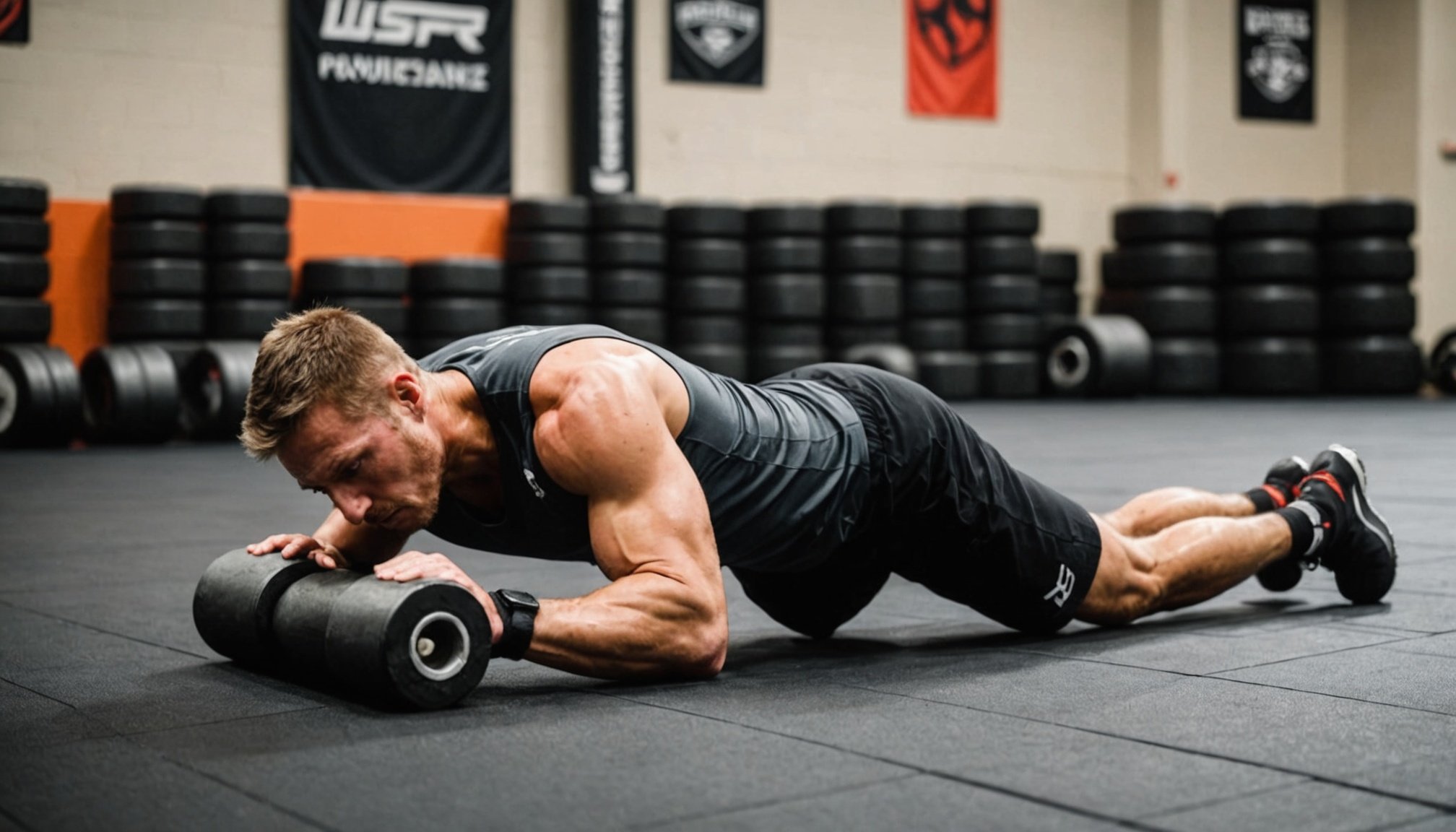In the demanding world of combat sports, where athletes push their bodies to the limits during training and competition, recovery becomes a crucial aspect of overall performance. As a fighter, whether you practice MMA, boxing, or any form of martial arts, understanding how to effectively recover can greatly enhance your performance. Recovery isn’t just about taking a break; it involves specific exercises and techniques designed to help your muscles heal and adapt after intense workouts. One such technique that has gained popularity among fighters and fitness enthusiasts alike is foam rolling.
Foam rolling is a type of self-myofascial release that helps alleviate muscle soreness and tightness. Incorporating this practice into your routine can not only speed up recovery but also improve your overall muscle function. In this article, we will explore various recovery practices, focusing on foam rolling, to understand how they can boost your performance in combat sports.
In parallel : How can beginner boxers improve their footwork for better agility in the ring?
The Science Behind Muscle Recovery
Recovery is a fundamental part of any training regime, especially in high-contact sports like MMA or boxing, where the body endures significant stress. When you engage in intense training, your muscles experience tiny tears. This is a normal part of building strength and endurance, but they require adequate time and care to heal properly.
The recovery process involves several physiological mechanisms. Muscles need rest to repair and rebuild stronger than before. During this time, various hormonal responses occur, facilitating muscle growth and regeneration. Understanding these processes can help you appreciate why recovery techniques are essential.
In parallel : What psychological tactics can be used to gain an advantage in a judo match?
Foam rolling plays a key role in this recovery process. By applying pressure to specific areas of the body, foam rolling helps improve blood circulation. Enhanced circulation means more nutrients and oxygen reach your damaged tissues, promoting faster healing. Additionally, this technique helps in breaking down scar tissue and adhesions that can restrict muscle movement and flexibility.
Incorporating techniques like foam rolling into your recovery routine not only helps with muscle soreness but can also improve your performance by enhancing your range of motion. A good range of motion is crucial for fighters, as it affects your ability to execute various techniques and can even reduce the risk of injury. The better prepared and more mobile your body is, the more effective your combat skills will be.
Incorporating Foam Rolling into Your Training Routine
To reap the benefits of foam rolling, integrating it into your training routine is essential. The best times to include foam rolling are before and after your workouts. This strategic placement can help you warm up your muscles and prepare them for the intense activity ahead.
Before training, spend about 5-10 minutes using a foam roller on key areas, such as your legs, back, and shoulders. This practice helps to loosen tight muscles and improve blood flow, making your body more responsive during exercise. It can also enhance your agility, which is vital for combat sports.
After training, foam rolling serves as a form of active recovery. It helps to alleviate any tightness or soreness generated during your workout. Spend another 10-15 minutes focusing on areas that feel particularly tense, rolling back and forth slowly to allow time for your muscles to adapt to the pressure.
It’s important to approach foam rolling with a mindful attitude. Listen to your body and adjust the pressure according to your comfort level. If you encounter particularly sore spots, spend more time on those areas, but avoid excessive force that could cause more harm than good. Remember, the goal is to enhance recovery, not to inflict pain. Regular foam rolling can lead to noticeable improvements in your performance, allowing you to train harder and recover faster.
Other Recovery Techniques for Fighters
While foam rolling is an effective recovery technique, it’s not the only method available to optimize your recovery process. A successful recovery strategy combines various practices that contribute to overall muscle health and performance.
One widely used method is stretching. Incorporating both static and dynamic stretches can significantly enhance flexibility and reduce the risk of injury. Flexibility is vital for fighters, as it allows for greater mobility in executing complex techniques. Spend time before and after your workouts to stretch major muscle groups, focusing on those that are heavily utilized during your training.
Another essential recovery practice is hydration. Dehydration can lead to decreased performance and prolonged recovery time. Ensure that you drink water consistently before, during, and after your training sessions. Additionally, consider electrolyte drinks if you engage in prolonged or intense training sessions, as they help replenish lost minerals.
Nutrition also plays a critical role in recovery. Consuming a balanced diet rich in proteins, carbohydrates, and healthy fats is necessary to fuel your body and aid in muscle repair. Post-workout meals should include protein to help muscle recovery, complemented by carbohydrates to replenish glycogen stores.
Moreover, adequate sleep is non-negotiable. Quality sleep is when the body repairs itself and recovers from the stress of training. Aim for 7-9 hours of uninterrupted sleep each night to ensure your body has the time it needs to recover fully.
Combining these techniques—foam rolling, stretching, hydration, nutrition, and sleep—can create a comprehensive recovery plan that enhances your overall fitness and performance as a fighter.
Measuring the Impact of Recovery on Performance
As you integrate recovery practices like foam rolling into your training regimen, it’s crucial to measure their impact on your performance. Understanding how recovery affects your muscles and overall training can help you tweak your strategies for even better results.
Start by tracking your training intensity, frequency, and recovery practices in a journal. Note how you feel during workouts: Are your muscles tight? Do you experience fatigue faster than usual? This information can help you pinpoint which recovery techniques work best for you.
You should also monitor your progress in terms of speed, strength, and endurance. Are you able to train longer, or do you notice improved agility during combat training? Such observations can indicate whether your recovery techniques are effective.
Additionally, consider incorporating performance testing into your routine. Simple tests, such as measuring your maximum lifting capacity or sprint times, can provide concrete data on your performance levels over time. By comparing results before and after implementing recovery practices, you can identify the benefits gained from consistent foam rolling and other techniques.
Listening to your body is paramount. If you consistently feel fatigued or experience prolonged soreness, it may be a sign that your recovery strategies need adjustment. Don’t hesitate to seek guidance from a coach or sports therapist who can provide professional insight into your recovery needs. Recovery is not a one-size-fits-all approach, and finding what works best for you might require some experimentation.
The journey of a fighter is filled with challenges, both physically and mentally. As you strive to improve your skills in martial arts or boxing, remember that recovery is just as important as the training itself. Practices such as foam rolling can play a significant role in enhancing your performance, ensuring that you’re not only training harder but also training smarter.
Through a combination of effective recovery strategies—including foam rolling, stretching, proper nutrition, and hydration—you can optimize your training results. By prioritizing recovery, you not only support your body’s healing process but also build a solid foundation for strength, endurance, and agility.
The benefits of these recovery techniques extend beyond just the physical. A well-rounded recovery approach can enhance your mental clarity and focus, crucial aspects in high-stakes combat environments. As you embrace these practices, you’ll likely find yourself not only reaching but surpassing your fitness and performance goals in the world of combat sports.











